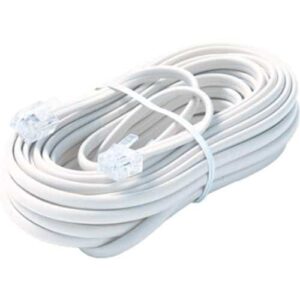This article simplifies the basics of what a home network does, including how it’s used for Internet, video hookups, and gaming.
The Internet is now a fixture in more than 70 percent of U.S. households, with more than 95 percent of those gaining access through a high-speed connection. High-speed broadband service can be accessed through a phone line, cable, or satellite data connection. This moderately priced (between $15 and $80 per household per month) information and entertainment explosion makes networking your home computers a smart idea.
Home Networks
A household data network connects two or more computers, printers, or other devices, using cables or radio links. A computer connected to the network can exchange with other devices on the same network any information that can be converted to digital data. This can include computer files and commands, text and voice messages, music, and video. The same network can connect Internet access points, video cameras, and printers. In other words, a home computer network can distribute information to and from every room in the house.
Most home networks handle two kinds of data: information that originates outside the local network, including Web pages and e-mail that come in through the Internet, and data that move from one local device to another, such as files, remote-control commands, and signals from remote cameras and other sensors.
If you’ve ever wanted to work on a file that resides on another computer in your house without having to walk over to that computer and either copy or email the file, a home network is the solution. With a home network, all of your computers are connected and all files can be accessed from any machine. Without transferring a file, you can make whatever changes you want to it, no matter where the file is stored.
This convenience also extends to printing. You can set up one printer to the network and print from any computer. Or, you may choose to have more than one printer, such as one that is only for black-and-white copies and one for color copies. You simply choose the printer you want to use and click Print.
Digital Music & Video Sharing
Today’s Internet provides access to a vast array of audio and video feeds from around the globe. Virtually any kind of music you can think of, as well as news and sports commentary, TV shows, and movies can stream through a computer hookup to your stereo system or television sets in your home.
Your computer can not only play these various forms of media but also store them on its hard drive. An audio server can send music from the computer via an audio cable hooked up to a stereo system for listening in any room of the house. And a digital video recorder can send TV shows and movies, as well as music and photographs, through the network to television sets throughout the house.
The beauty of having these devices as part of your home network is that together they create a comprehensive home media center without the need for any CDs, DVDs, or other physical forms of media, and you can download all of these onto the network as well.
Video Camera Monitoring
When attached to a home network, stand-alone video cameras can add a measure of safety and security to your home. For example, cameras can help you keep video tabs on your children in another room or let you know who’s at your front door.
Audio and video can be transmitted to any networked computer, and even through the Internet. You can switch from your computer screen to the video output whenever you want, or, in the case of a sleeping baby, perhaps, keep the video output open in a small window on your screen.
Multiple Player Gaming
In addition to being able to stream audio and video throughout a house, a home network can allow game players to compete with others in the house—or anywhere else on the planet for that matter—through the Internet.
In addition, the home network can also connect two or more game consoles such as Sony’s PlayStation, Microsoft’s Xbox, and Nintendo’s Wii to allow players in different locations to compete against each other.








 Don Vandervort writes or edits every article at HomeTips. Don has:
Don Vandervort writes or edits every article at HomeTips. Don has:



